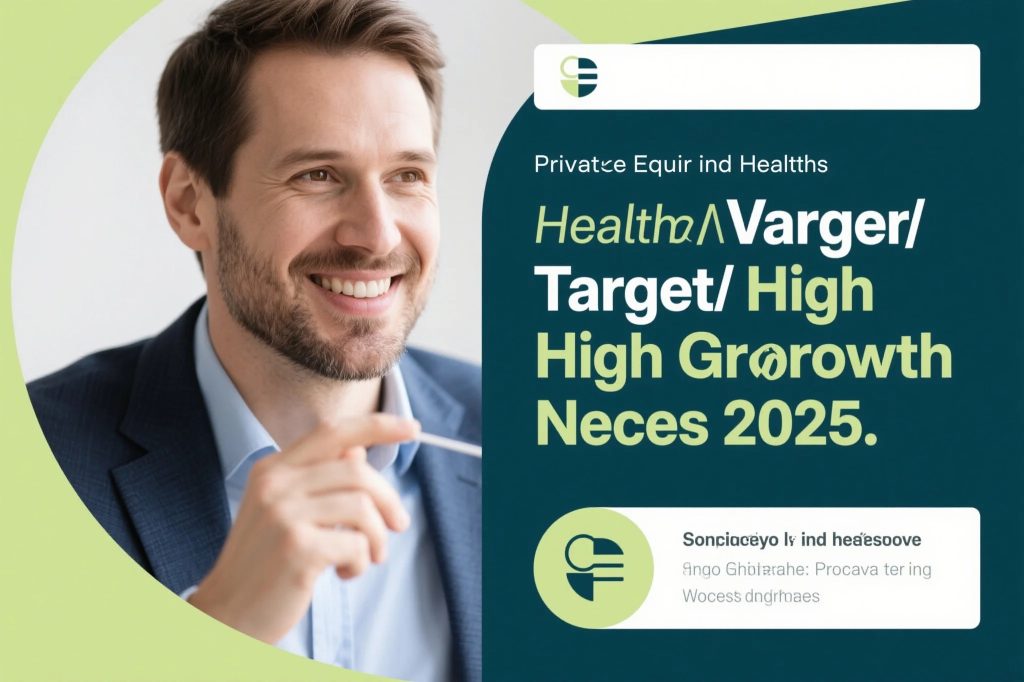
the healthcare private equity landscape in transition
The private equity ecosystem within healthcare has entered a new phase of specialization, with firms increasingly moving beyond traditional practice roll-ups to target highly specific clinical and technological niches. This evolution reflects both the maturation of earlier investment strategies and recognition that the most compelling opportunities now exist at the intersections of healthcare sub-sectors. Behavioral health platforms combining telehealth with in-person services, for instance, have attracted significant capital as payors finally align reimbursement with the growing mental health crisis. Similarly, multi-site specialty practices in areas like gastroenterology and dermatology continue to command premium valuations due to their recession-resistant characteristics and fragmentation ripe for consolidation.
What distinguishes current healthcare investment activity from previous cycles is the sophisticated approach to value creation. Rather than simply applying financial engineering to stable cash flows, today’s leading firms deploy operational partners who can implement technological solutions and optimize clinical workflows. This hands-on approach has proven particularly effective in outpatient surgery centers and diagnostic imaging, where incremental improvements in equipment utilization and staffing efficiency can dramatically impact profitability. The most successful platforms have demonstrated an ability to not just aggregate assets but create genuine synergies across their portfolio companies.
emerging high-growth niches attracting capital
Several specialized healthcare segments have become magnets for private equity capital in 2025, each offering unique growth characteristics and defensive qualities. Value-based care enablers represent one such hotspot, with firms backing companies that help providers transition from fee-for-service to risk-bearing arrangements. These businesses typically combine data analytics with care coordination services, addressing the growing need for providers to manage population health effectively. Another active niche involves medication management platforms serving complex patients – particularly seniors with multiple chronic conditions – where polypharmacy concerns create demand for specialized pharmacy services.
The growth equity portion of the healthcare investment spectrum has been particularly active in digital therapeutics and remote patient monitoring solutions. These technologies gained credibility during the pandemic and now benefit from established reimbursement pathways. What makes them attractive for private equity is their capital-light scalability combined with the ability to generate recurring revenue through SaaS-like business models. The most sophisticated investors are building thematic portfolios across adjacent digital health solutions rather than betting on standalone products.
deal sourcing strategies in a competitive market
With healthcare representing nearly 20% of all private equity deal volume, firms have had to develop increasingly creative approaches to sourcing proprietary deal pipeline opportunities. Many now employ clinical executives as full-time deal team members who can identify under-the-radar targets through professional networks and medical conferences. Some firms have established physician leadership councils – groups of practicing doctors who provide ground-level intelligence on practice economics and emerging care models. This frontline access often surfaces investment themes before they appear in industry reports or banking processes.
The most successful healthcare investment teams treat deal pipeline development as a continuous process rather than reacting to marketed opportunities. They build relationships with founder-owners years before expected liquidity events, often providing informal strategic advice that positions them favorably when the owner eventually considers a transaction. This long-game approach has become essential in specialties like ophthalmology and fertility services, where desirable platforms rarely come to market through traditional auction processes. The current sector trends suggest this relationship-driven model will only grow more important as competition for quality assets intensifies.

valuation dynamics and capital structures
Healthcare private equity transactions in 2025 reflect both the sector’s resilience and the broader capital markets environment. While EBITDA multiples have compressed from their 2021 peaks, premium assets in attractive niches still command 12-15x multiples, with particularly strong demand for businesses with technology-enabled services components. The growth equity segment has seen even richer valuations for companies demonstrating 30%+ organic growth, with some clinical trial services and healthcare IT platforms achieving 20x revenue multiples.
These valuation levels have prompted creative approaches to capital structuring in healthcare investment deals. Seller notes and earn-outs have become more common as buyers seek to bridge valuation expectations, particularly in physician practice management transactions. Unitranche debt facilities have gained popularity for middle-market healthcare deals, offering simpler capital structures than traditional senior/subordinated arrangements. The current sector trends also show increasing use of preferred equity instruments in growth-stage healthcare companies, providing downside protection while allowing investors to participate in upside potential.
regulatory considerations shaping investments
Healthcare private equity investors in 2025 must navigate an increasingly complex regulatory environment that varies significantly by subsector. The Stark Law and Anti-Kickback Statute continue to govern physician practice investments, but recent value-based care exceptions have created new flexibility for innovative care models. Behavioral health and substance abuse treatment platforms face particular scrutiny given historical abuses in these areas, requiring robust compliance infrastructure as part of any healthcare investment thesis.
Forward-looking firms are adapting their deal pipeline strategies to account for these regulatory realities. Many now conduct compliance audits during due diligence rather than after closing, recognizing that remediation costs can significantly impact projected returns. The most sophisticated players view regulatory expertise as a competitive advantage, hiring former healthcare regulators to help shape investment theses and portfolio company strategies. These sector trends reflect the growing recognition that in healthcare, regulatory strategy is business strategy.
operational value creation playbooks
The most successful healthcare private equity firms have moved far beyond simple cost-cutting to develop comprehensive operational value creation frameworks. These typically involve four pillars: revenue cycle optimization, clinical productivity improvements, supply chain rationalization, and strategic add-on acquisitions. In specialty pharmacy platforms, for instance, leading investors have generated 300-500 basis points of margin improvement through sophisticated drug procurement strategies and hub service offerings that enhance patient adherence.
These operational approaches vary significantly across healthcare subsectors, requiring tailored growth equity strategies for each niche. Outpatient surgery centers might focus on block scheduling and implant cost management, while behavioral health platforms prioritize clinician recruitment and retention strategies. The common thread across all successful healthcare investment strategies is deep operational expertise married with financial discipline. Current sector trends show the most sought-after management teams are those with prior experience scaling healthcare businesses through multiple economic cycles.
exit strategy considerations
Healthcare private equity exits in 2025 reflect both the maturation of earlier investment vintages and evolving buyer preferences. Strategic acquirers remain active for clinical platforms with strong market positions, particularly those offering technology-enabled services that complement hospital systems’ ambulatory strategies. The growth equity segment has seen robust IPO activity for healthcare IT and tech-enabled services businesses, though many firms are opting for extended hold periods given the attractive organic growth profiles of these assets.
Secondary buyouts continue to represent a significant portion of healthcare investment exits, particularly for larger platforms requiring sophisticated operational capabilities. These transactions increasingly involve cross-border elements as international buyers seek U.S. healthcare exposure. The current sector trends also show growing interest from nontraditional acquirers like payors and health systems looking to vertically integrate, creating additional exit optionality for well-positioned platforms.
the future of healthcare private equity
As healthcare continues representing nearly 20% of U.S. GDP, private equity will remain a dominant force shaping the industry’s evolution. The next wave of healthcare investment activity will likely focus on artificial intelligence applications in clinical decision support and revenue cycle management, as well as platforms addressing healthcare labor shortages through innovative staffing models. The intersection of healthcare and consumerism also presents significant opportunities, particularly in cash-pay wellness and concierge medicine models.
What’s clear from current sector trends is that successful healthcare private equity investing requires both subsector specialization and operational sophistication. Firms that can combine financial rigor with genuine healthcare expertise will continue finding attractive opportunities even in a competitive market. The most forward-looking investors are already building capabilities in emerging areas like value-based care infrastructure and healthcare data interoperability, positioning themselves for the next phase of industry transformation.